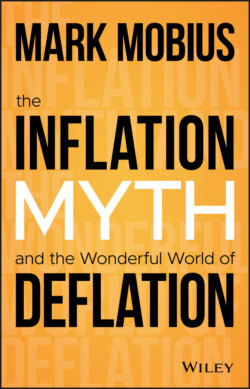Читать книгу The Inflation Myth and the Wonderful World of Deflation - Mark Mobius - Страница 13
The Long Coffin
ОглавлениеAt the center of the Bank of England is a small courtyard garden, which is the preserve of the incumbent governor. Originally, the garden was a graveyard. When the Bank moved to Threadneedle Street in 1734, it soon expanded to take over the church next door which was subsequently deconsecrated and demolished. However, the decision was taken to leave the graveyard there. In the 1920s and 1930s, when the Bank needed rebuilding again, the Garden Court was dug up to reveal several coffins, one of which was the curiosity of William Jenkins. Jenkins worked at the Bank in the late 1700s, was 6 feet 7 inches tall, and was buried in the Garden Court as his friends were worried that his body might be stolen and sold. Such was the size of Jenkins’ coffin that when it was moved to Nunhead Cemetery, it had to be placed in the catacombs as it was too long for the vaults.
Back at the restored Garden Court meanwhile, as part of the renovations the Court was planted with mulberry trees. The reason for the choice of trees was twofold. First, there was the practical consideration that the roots of the mulberry tree grow horizontally, rather than straight down into the ground: handy when the Bank of England’s gold vaults (which contain some 400,000 bars of gold) are directly underneath. Second, and more symbolically, the mulberry tree has played a critical role in the history of money. In seventh‐century China, the bark of the mulberry tree was used to make the earliest form of paper currency. The old saying has it that money doesn’t grow on trees. But in early China, it did; and when it arrived, inflation was swift to follow.
